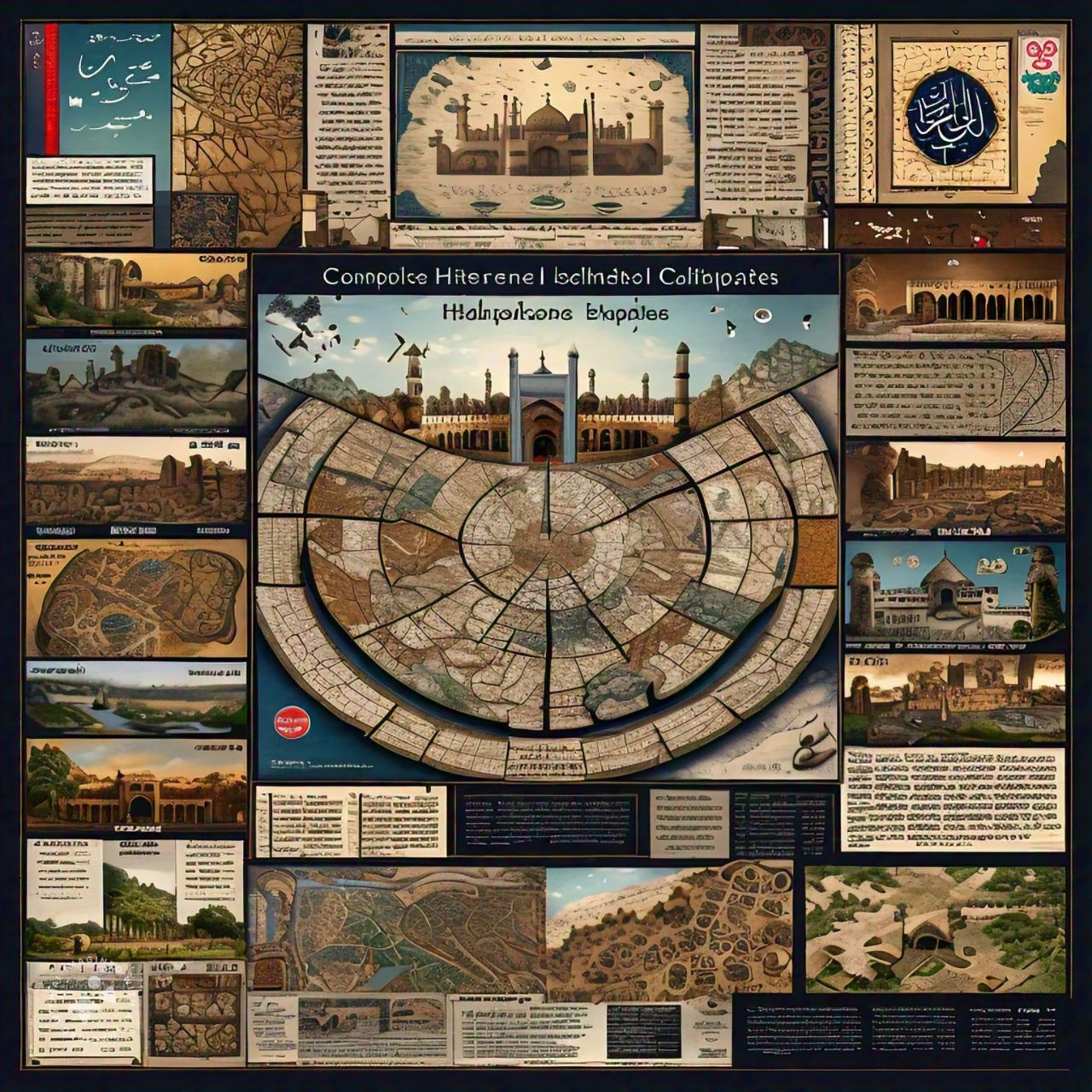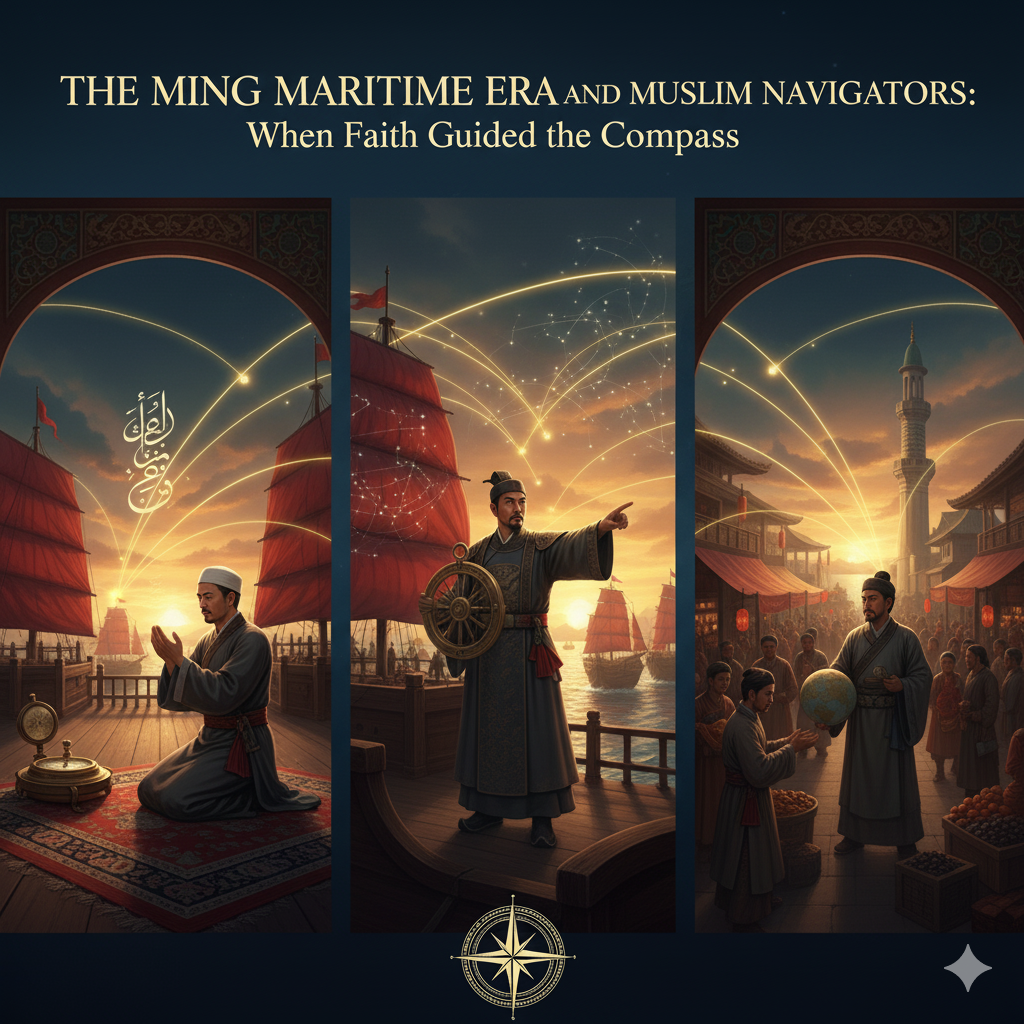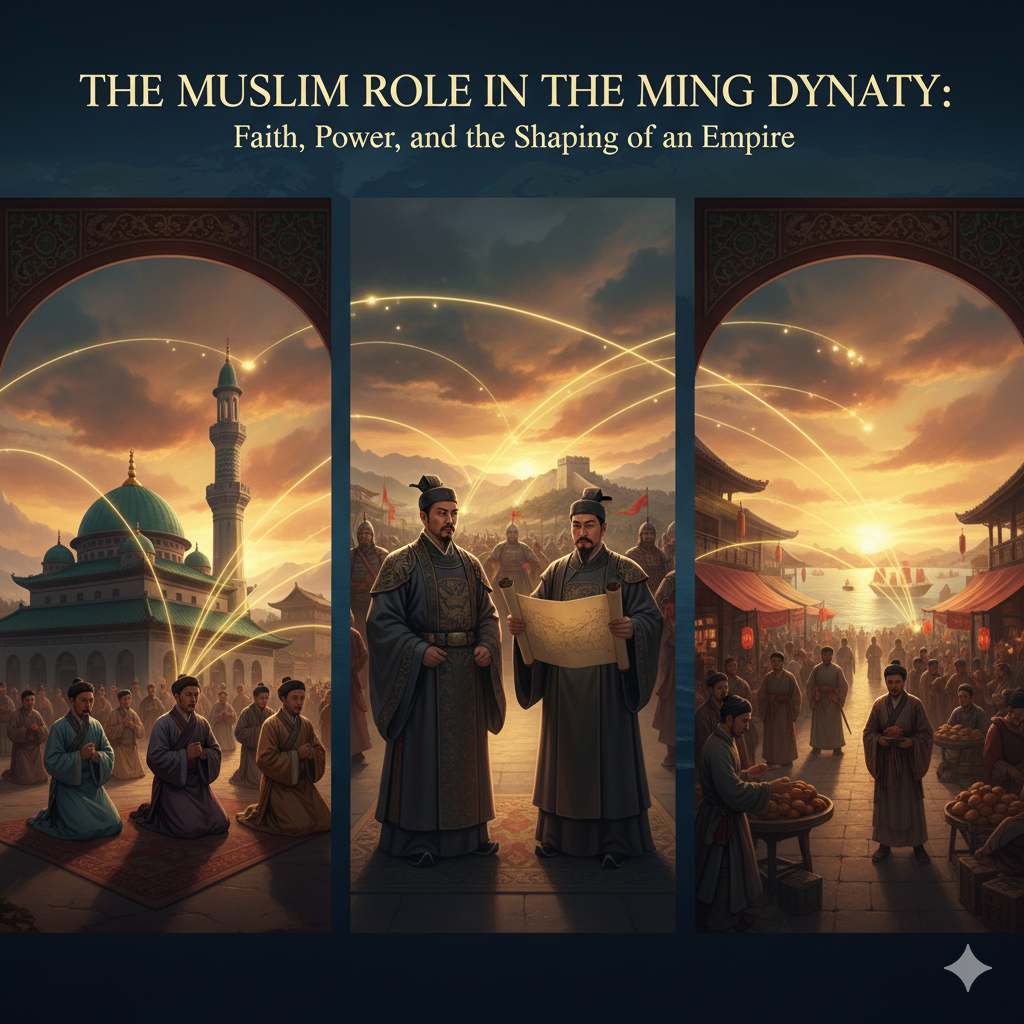The Islamic caliphates have been central to the history of the Muslim world, spanning over 1,400 years and shaping much of global civilization. The title of “caliph,” meaning “successor,” was given to leaders who were considered political and spiritual successors to the Prophet Muhammad. The following outlines the major caliphates and their most notable caliphs, shedding light on their influence and legacy.
The total number of caliphs across the major Islamic caliphates can be categorized as follows:
Rashidun Caliphate (632–661 CE)
- Number of Caliphs: 4
- Caliphs: Abu Bakr, Umar ibn al-Khattab, Uthman ibn Affan, Ali ibn Abi Talib
Umayyad Caliphate (661–750 CE, and in Al-Andalus until 1031 CE)
- Number of Caliphs:
- Damascus: 14
- Cordoba (Al-Andalus): 16
- Total Umayyad Caliphs: 30
Abbasid Caliphate (750–1258 CE, and in Cairo from 1261–1517 CE)
- Number of Caliphs:
- Baghdad: 37
- Cairo (Mamluk Era): 18
- Total Abbasid Caliphs: 55
Fatimid Caliphate (909–1171 CE)
- Number of Caliphs: 14
Ottoman Caliphate (1517–1924 CE)
- Number of Caliphs: 29
Total Number of Caliphs
Adding up the caliphs across these major caliphates:
Total Caliphs: 4 (Rashidun) + 30 (Umayyad) + 55 (Abbasid) + 14 (Fatimid) + 29 (Ottoman) = 132
So, there were a total of 132 caliphs across the Rashidun, Umayyad, Abbasid, Fatimid, and Ottoman caliphates.
1. Rashidun Caliphate (632–661 CE)
The Rashidun Caliphate, often regarded as the “Golden Age” of early Islam, was established immediately after the death of Prophet Muhammad. It lasted for just 30 years but laid the foundation for Islamic governance. There were four caliphs during this period, known as the “Rightly Guided” caliphs:
- Abu Bakr al-Siddiq (Rashidun Caliphate)
- Reign: 632–634 CE
- Influence: As the first caliph, Abu Bakr was pivotal in consolidating the Muslim state after the death of Prophet Muhammad. His leadership helped prevent the fragmentation of the nascent Muslim community. His decision to compile the Quran into a single, cohesive text also laid the groundwork for its preservation.
- Umar ibn al-Khattab (Rashidun Caliphate)
- Reign: 634–644 CE
- Influence: Umar is widely regarded as one of the most transformative caliphs. Under his leadership, the Islamic Empire expanded rapidly, conquering vast territories, including Persia, Egypt, and parts of the Byzantine Empire. He established many important administrative practices, such as the Islamic calendar, welfare systems, and legal reforms. His emphasis on justice and fairness made him a key figure in the development of Islamic governance.
- Uthman ibn Affan (644–656) – Oversaw the compilation of the Quran into a single text.
- Ali ibn Abi Talib (656–661) – The fourth caliph, whose reign was marked by internal conflict, leading to the first major civil war in Islam, the First Fitna.
2. Umayyad Caliphate (661–750 CE, and in Al-Andalus until 1031 CE)
The “Umayyad Caliphs” (Arabic: الخلافة الأموية) were leaders of the Umayyad dynasty, an Islamic caliphate that ruled from 661 to 750 CE, centered in Damascus, and later from 756 to 1031 CE in Cordoba, Spain. Here is a list of notable Umayyad caliphs:
Umayyad Caliphs (Damascus Era, 661–750 CE)
- Muawiya I (661–680) – Founder of the Umayyad Caliphate.
- Yazid I (680–683) – Known for the Battle of Karbala.
- Muawiya II (683–684) – Ruled briefly and died young.
- Marwan I (684–685) – Established stability after a period of civil war.
- Abd al-Malik (685–705) – Introduced administrative and coinage reforms.
- Al-Walid I (705–715) – Expanded the empire to its largest extent.
- Sulayman (715–717) – Known for his piety.
- Umar II (717–720) – Remembered for his justice and reforms.
- Yazid II (720–724) – Continued expansion.
- Hisham (724–743) – A long-reigning caliph; the empire reached its peak in stability.
- Al-Walid II (743–744) – His rule was marred by internal strife.
- Yazid III (744) – Short reign, involved in internal disputes.
- Ibrahim (744) – Ruled briefly and was deposed.
- Marwan II (744–750) – Last Umayyad caliph in Damascus, defeated in the Abbasid Revolution.
Umayyad Caliphs (Cordoba Emirate and Caliphate, 756–1031 CE)
- Abd al-Rahman I (756–788) – Established Umayyad rule in Al-Andalus (Spain).
- Hisham I (788–796) – Consolidated control in Spain.
- Al-Hakam I (796–822) – Known for economic and cultural development.
- Abd al-Rahman II (822–852) – Further enhanced cultural achievements.
- Muhammad I (852–886) – Faced internal revolts.
- Al-Mundhir (886–888) – Ruled briefly.
- Abdallah (888–912) – Troubled rule with significant revolts.
- Abd al-Rahman III (912–961) – Declared himself Caliph; peak of the Umayyad power in Spain.
- Al-Hakam II (961–976) – Patron of scholars; Córdoba flourished under his rule.
- Hisham II (976–1009; 1010–1013) – His reign was dominated by his viziers and eventually led to the caliphate’s decline.
The Umayyad rule in Spain ended with the dissolution of the Caliphate of Córdoba in 1031, leading to a fragmented rule by smaller taifa kingdoms.
The Umayyads were the first hereditary dynasty of caliphs, and their rule marked a significant shift in the structure of Islamic governance. After the assassination of Ali, the Umayyad family rose to power under Muawiya I
Influence: Muawiya was the founder of the Umayyad dynasty and was instrumental in transforming the caliphate into a hereditary monarchy. His reign marked the beginning of the Umayyad Empire, which expanded Islamic rule across North Africa, Spain, and Central Asia. Muawiya’s leadership established the foundations for the political structure of the Umayyads, which would dominate much of the Islamic world for nearly a century.
Reign: 661–680 CE
- Notable Caliphs:
- Abu Sufyan – The founder of the Umayyad dynasty.
- Abd al-Malik ibn Marwan (685–705) – Known for the Arabization of the administration and the introduction of the gold dinar.
- Al-Walid I (705–715) – Oversaw the greatest territorial expansion of the empire.
The Umayyads eventually fragmented into regional rulers, most notably the Emirate of Cordoba in Al-Andalus.
3. Abbasid Caliphate (750–1258 CE, and in Cairo from 1261–1517 CE)
The Abbasid Caliphate came to power after overthrowing the Umayyads, with the support of the Shia and disillusioned Arabs. They moved the capital to Baghdad, ushering in a golden age of cultural, intellectual, and economic achievements.
The Abbasid Caliphate (الخلافة العباسية) was the third major Islamic caliphate, ruling much of the Muslim world from 750 to 1258 CE, with a later resurgence in Cairo from 1261 to 1517 CE. The Abbasids overthrew the Umayyad Caliphate and established a dynasty centered in Baghdad, which became a major cultural, intellectual, and economic hub during the Islamic Golden Age.
Here is a list of notable Abbasid caliphs:
Abbasid Caliphs (Baghdad Era, 750–1258 CE)
- Abu al-Abbas al-Saffah (750–754) – Founder of the Abbasid Caliphate.
- Al-Mansur (754–775) – Established Baghdad as the capital and strengthened the caliphate.
- Al-Mahdi (775–785) – Continued economic development and patronized scholars.
- Al-Hadi (785–786) – Short reign, known for internal family disputes.
- Harun al-Rashid (786–809) – His reign marked the height of Abbasid prosperity and cultural flourishing.
- Al-Amin (809–813) – His conflict with his brother led to the Fourth Fitna (civil war).
- Al-Ma’mun (813–833) – Promoted science, philosophy, and theology; established the House of Wisdom.
- Al-Mu’tasim (833–842) – Created a loyal Turkish army and shifted focus to military strength.
- Al-Wathiq (842–847) – Continued patronage of the arts and sciences.
- Al-Mutawakkil (847–861) – Known for his controversial policies towards non-Muslims and attempts to centralize power.
- Al-Muntasir (861–862) – Reigned briefly, with significant family strife.
- Al-Musta’in (862–866) – Deposed after a power struggle.
- Al-Mu’tazz (866–869) – Faced internal instability and economic challenges.
- Al-Muhtadi (869–870) – A short reign, marked by attempts at reform.
- Al-Mu’tamid (870–892) – Reigned during a period of significant regional autonomy.
- Al-Mu’tadid (892–902) – Restored some central authority.
- Al-Muktafi (902–908) – Stabilized the state after previous unrest.
- Al-Muqtadir (908–932) – His long reign saw the weakening of central authority.
- Al-Qahir (932–934) – Known for his authoritarian rule.
- Al-Radi (934–940) – Last Abbasid caliph with significant political power.
- Al-Muttaqi (940–944) – Faced numerous internal challenges.
- Al-Mustakfi (944–946) – Deposed by powerful military factions.
- Al-Muti (946–974) – Ruled during a time of significant Buyid control.
- Al-Ta’i (974–991) – Largely a figurehead under Buyid dominance.
- Al-Qadir (991–1031) – Restored some authority but faced Seljuk expansion.
- Al-Qa’im (1031–1075) – Ruled during the Seljuk ascendancy.
- Al-Muqtadi (1075–1094) – Established good relations with the Seljuks.
- Al-Mustazhir (1094–1118) – Ruled during the First Crusade.
- Al-Mustarshid (1118–1135) – Tried to assert more independence from Seljuks.
- Al-Rashid (1135–1136) – Deposed and killed during political turmoil.
- Al-Muqtafi (1136–1160) – Strengthened the caliphate’s autonomy.
- Al-Mustanjid (1160–1170) – Continued to consolidate Abbasid power.
- Al-Mustadi (1170–1180) – Improved the caliphate’s relations with other Muslim rulers.
- Al-Nasir (1180–1225) – Strengthened the caliphate’s influence and centralized authority.
- Al-Zahir (1225–1226) – Brief reign, succeeded by his son.
- Al-Mustansir (1226–1242) – Patron of learning; founded the Mustansiriya School.
- Al-Musta’sim (1242–1258) – Last Abbasid caliph in Baghdad; killed by the Mongols during the sack of Baghdad in 1258.
Abbasid Caliphs (Cairo Era, 1261–1517 CE)
After the fall of Baghdad, the Abbasids established a symbolic caliphate in Cairo under the protection of the Mamluk Sultanate:
- Al-Mustansir II (1261–1262) – First Abbasid caliph in Cairo.
- Al-Hakim I (1262–1302) – Provided legitimacy to the Mamluk Sultanate.
- Al-Mustakfi I (1302–1340) – Caliphs served as religious figureheads.
- Al-Wathiq I (1340–1341) – Continued symbolic rule.
- Al-Hakim II (1341–1352) – Brief tenure in Cairo.
- Al-Mu’tadid I (1352–1362) – Retained limited influence.
- Al-Mutawakkil I (1362–1383) – Later reinstated for a second term.
- Al-Wathiq II (1383–1386) – Short rule with minimal political power.
- Al-Mu’tasim II (1386–1389) – Figurehead under Mamluk control.
- Al-Mutawakkil II (1389–1406) – Another symbolic caliphate period.
- Al-Musta’in (1406–1414) – Attempted minor reforms.
- Al-Mu’tadid II (1414–1441) – Continued role as religious figurehead.
- Al-Mustakfi II (1441–1451) – His role remained largely symbolic.
- Al-Qa’im (1451–1455) – His influence was mostly ceremonial.
- Al-Mustanjid (1455–1479) – Provided legitimacy to Mamluk rule.
- Al-Mutawakkil III (1479–1517) – Last Abbasid caliph; ended with the Ottoman conquest of Egypt in 1517.
The Ottomans took control after the fall of Cairo, claiming the title of Caliph. The Abbasid caliphs in Cairo were primarily symbolic leaders, as real power was held by the Mamluks.
- Notable Caliphs:
- Al-Mansur (754–775) – Founder of the Abbasid dynasty.
- Harun al-Rashid
- Reign: 786–809 CE
- Influence: Harun al-Rashid presided over the Abbasid Golden Age, a period of cultural, scientific, and intellectual flourishing. Baghdad, the Abbasid capital, became a global center for learning, housing the famous House of Wisdom. Harun’s reign saw significant advancements in mathematics, astronomy, medicine, and philosophy. His support of scholars and translation of Greek texts into Arabic shaped the intellectual history of the Islamic world and Europe.
- Al-Ma’mun
- Reign: 813–833 CE
- Influence: Al-Ma’mun is known for his patronage of science, philosophy, and rationalism. He was instrumental in the translation movement, which preserved and expanded upon Greek and Roman knowledge. His reign saw the establishment of the Bayt al-Hikma (House of Wisdom) and a push for intellectual exploration that helped lay the foundations for the Islamic Golden Age.
In the later period, the Abbasid Caliphs became symbolic rulers under the influence of the Seljuks and other regional powers.
4. Fatimid Caliphate (909–1171 CE)
The Fatimids were an Ismaili Shia dynasty that claimed descent from Fatimah, the daughter of the Prophet Muhammad. They established their capital in Cairo and ruled over vast territories in North Africa, Egypt, and parts of the Levant.
- Notable Caliphs:
- Abdallah al-Mahdi Billah (909–934) – Founder of the Fatimid Caliphate.
- Al-Mu’izz li-Din Allah (Fatimid Caliphate)
- Reign: 953–975 CE
- Influence: Al-Mu’izz was the founder of the Fatimid Caliphate in Egypt, establishing Cairo as the capital. Under his reign, Cairo became a major center for culture, science, and trade. His leadership helped spread Ismaili Shia Islam across North Africa and beyond. His rule marked the beginning of the Fatimid dynasty’s flourishing, influencing both political and religious spheres in the region.
- Al-Hakim bi-Amr Allah (996–1021) – Known for his eccentric rule and significant religious influence, revered by the Druze.
The Fatimid Caliphate eventually weakened and collapsed in the 12th century, with Egypt falling under the control of the Ayyubid dynasty.
Fatimid Caliphs (909–1171 CE)
- Abdallah al-Mahdi Billah (909–934) – Founder of the Fatimid Caliphate; established rule in Ifriqiya.
- Al-Qa’im Bi-Amrillah (934–946) – Continued to expand the caliphate and consolidate control.
- Al-Mansur Billah (946–953) – Successfully defended against the Kharijite Berber revolts.
- Al-Mu’izz li-Din Allah (953–975) – Expanded the caliphate into Egypt and established Cairo as the capital.
- Al-Aziz Billah (975–996) – Strengthened the empire, fostered tolerance among different religious communities.
- Al-Hakim bi-Amr Allah (996–1021) – Known for his eccentric policies and religious reforms; revered by the Druze.
- Al-Zahir li-I’zaz Din Allah (1021–1036) – Ruled during a time of internal stability and economic prosperity.
- Al-Mustansir Billah (1036–1094) – His reign was one of the longest in Islamic history but was marred by internal crises.
- Al-Musta’li Billah (1094–1101) – His succession led to a split in the Ismaili community into Musta’li and Nizari branches.
- Al-Amir bi-Ahkam Allah (1101–1130) – His assassination led to a power struggle and further divisions.
- Al-Hafiz li-Din Allah (1130–1149) – Assumed power after a period of political instability.
- Al-Zafir (1149–1154) – His reign was marked by intrigue and assassination within the court.
- Al-Fa’iz (1154–1160) – A young caliph who reigned under the regency of military leaders.
- Al-Adid li-Din Allah (1160–1171) – Last Fatimid caliph; the caliphate ended with the rise of Salah ad-Din (Saladin), who established the Ayyubid dynasty and returned Egypt to Sunni Islam.
The Fatimid Caliphate’s end came when Saladin, who was sent to Egypt by the Sunni Abbasid Caliphate, took control and established Sunni rule. The Fatimid caliphs were noted for their support of learning, arts, and architecture, which led to Cairo becoming a major cultural and intellectual center.
5. Ottoman Caliphate (1517–1924 CE)
The Ottoman Empire emerged as a significant power in the 14th century, with the sultans eventually assuming the title of caliph after the Ottoman conquest of Egypt in 1517. The Ottomans ruled a vast empire that spanned Europe, Asia, and Africa, maintaining their caliphate status until the empire’s dissolution in 1924.
- Notable Caliphs:
- Selim I (1512–1520) – Conquered Egypt and claimed the caliphate, solidifying Ottoman control over the Muslim world.
- Suleiman the Magnificent (Ottoman Caliphate)
- Reign: 1520–1566 CE
- Influence: Suleiman the Magnificent is often considered the most notable Ottoman sultan, overseeing the empire at its peak. His military conquests expanded the Ottoman Empire to its greatest territorial extent, and he introduced significant legal reforms, known as the “Suleiman Code,” which harmonized legal systems across the empire. Suleiman’s patronage of the arts and architecture, especially in Istanbul, left a lasting cultural legacy.
- Abdul Hamid II (Ottoman Caliphate)
- Reign: 1876–1909 CE
- Influence: Abdul Hamid II is remembered as the last effective Ottoman caliph. His rule was marked by a struggle to preserve the empire against European imperialism and internal reform movements. Abdul Hamid was a significant figure in the pan-Islamic movement, positioning himself as a leader of all Muslims, and he attempted to unite the Muslim world under his leadership. His reign, however, ended with his deposition by the Young Turk Revolution.
The caliphate was abolished in 1924 by Mustafa Kemal Atatürk following the collapse of the Ottoman Empire after World War I.
The Ottoman Caliphate, also known as the Osmani Caliphate, was established after the fall of the Abbasid Caliphate in Cairo in 1517. The Ottoman sultans took the title of caliph and held it until the caliphate was officially abolished in 1924 following the collapse of the Ottoman Empire. The Ottomans claimed the caliphate to provide legitimacy as leaders of the Muslim world, although the title was largely symbolic in the early centuries, becoming more pronounced in the later period.
Early Ottoman Sultans and Caliphs (1517–1687)
- Selim I (1512–1520) – Known as “Selim the Grim,” he conquered Egypt and claimed the caliphate after defeating the Mamluks.
- Suleiman the Magnificent (1520–1566) – Expanded the Ottoman Empire to its peak, ruled with authority over Muslim lands, and was one of the most notable Ottoman rulers.
- Selim II (1566–1574) – His reign marked the beginning of the empire’s gradual decline in administrative control.
- Murad III (1574–1595) – Faced military challenges and economic issues but continued to hold symbolic authority as caliph.
- Mehmed III (1595–1603) – Led during a period of stagnation but maintained the caliphate’s religious authority.
- Ahmed I (1603–1617) – Known for building the Blue Mosque in Istanbul; maintained the caliphate.
- Osman II (1618–1622) – Tried to reform the Janissaries but was assassinated by his own troops.
- Murad IV (1623–1640) – Known for his strict rule and reclaiming control over Istanbul.
- Ibrahim (1640–1648) – Known as “Ibrahim the Mad”; deposed due to instability.
- Mehmed IV (1648–1687) – Oversaw the failed Siege of Vienna in 1683, a major turning point in Ottoman history.
Middle Period (1687–1839)
- Suleiman II (1687–1691) – Faced significant military losses, weakening the empire’s power.
- Ahmed III (1703–1730) – Known for the “Tulip Era,” a time of cultural flourishing but military setbacks.
- Mahmud I (1730–1754) – Restored some stability and made military reforms.
- Abdul Hamid I (1774–1789) – Faced defeats against Russia but tried to restore administrative efficiency.
- Selim III (1789–1807) – Initiated reforms to modernize the army; deposed by conservative factions.
- Mahmud II (1808–1839) – Known for extensive reforms, including the abolition of the Janissaries, modernizing the empire.
Late Ottoman Caliphs (1839–1924)
- Abdulmejid I (1839–1861) – Issued the Tanzimat reforms to modernize the empire; the empire became more centralized.
- Abdulaziz (1861–1876) – Continued reforms but faced economic crises and was deposed.
- Abdul Hamid II (1876–1909) – Known as the “last effective caliph”; he centralized power, and his rule marked the last strong attempt to assert pan-Islamic authority but was eventually deposed in a coup.
- Mehmed V (1909–1918) – Largely a figurehead during the Ottoman entry into World War I.
- Mehmed VI (1918–1922) – Last Ottoman sultan; deposed when the Ottoman Empire was dissolved following World War I.
Final Caliph
- Abdulmejid II (1922–1924) – Last caliph of the Ottoman dynasty; held only the symbolic title of caliph after the abolition of the sultanate. In 1924, Mustafa Kemal Atatürk formally abolished the caliphate, ending the Ottoman Caliphate.
The abolition of the Ottoman Caliphate in 1924 by the Turkish Republic marked the end of the caliphate as an institution, closing a chapter in Islamic history that had spanned over 1,400 years since the time of the Rashidun Caliphs.
Conclusion
The history of the Islamic caliphates spans centuries, witnessing the rise and fall of empires and dynasties. From the Rashidun Caliphate’s early foundations of Islamic governance to the Ottoman Caliphate’s symbolic final years, the role of the caliph has evolved from a unifying religious and political authority to a more ceremonial title. The legacy of the caliphates continues to shape the Muslim world and its cultural and political landscape today.
Each of these caliphs had a significant influence in different ways, whether through military conquest, intellectual advancement, or cultural transformation. Umar ibn al-Khattab stands out for his role in shaping the early Islamic state, while Harun al-Rashid and Al-Ma’mun are remembered for their contributions to the Islamic Golden Age. Suleiman the Magnificent had a lasting influence on the Ottoman Empire, while Abdul Hamid II remains significant in the context of late Ottoman history.
Ultimately, the most influential caliph depends on the criteria: whether it’s military conquest, cultural and intellectual contributions, or the ability to shape Islamic governance. Each caliph left a unique and enduring legacy in the history of Islam.










